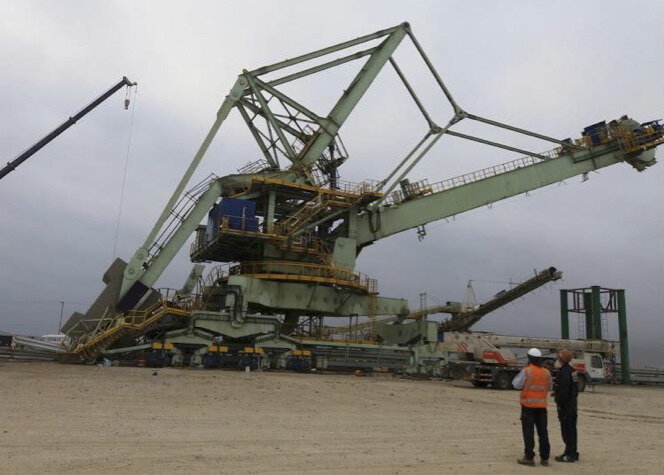Photograph of tippler during installation
Cracks in the Cage Structure
A number of cracks were identified in the cage structure of an existing rotary tippler, during routine site inspection, after approximately 10 years in operation. These cracks were immediately addressed using temporary repair procedures by the port operator.
While the temporary repair prevented immediate disruptions to the port operation, a long-term structural solution to the tippler cage structure was required in order to prevent similar cracks from reappearing. A conceptual structural modification was developed with the aid of Finite Element Analysis (FEA). A three-dimensional FEA model of the tippler cage structure was created and analysed to determine the extent of the highly stressed regions. This allowed the structural modification to be designed effectively and efficiently, as well as minimising the tonnage of the structural remediation work.
Comparative analysis with the existing (unmodified) tippler structure was carried out to verify the effectiveness of the structural modification. The final design solution was proposed to the port operator and the Original Equipment Manufacturer (OEM) for their acceptance and approval. The proposed structural modification has since been approved by the OEM and successfully implemented on site.









